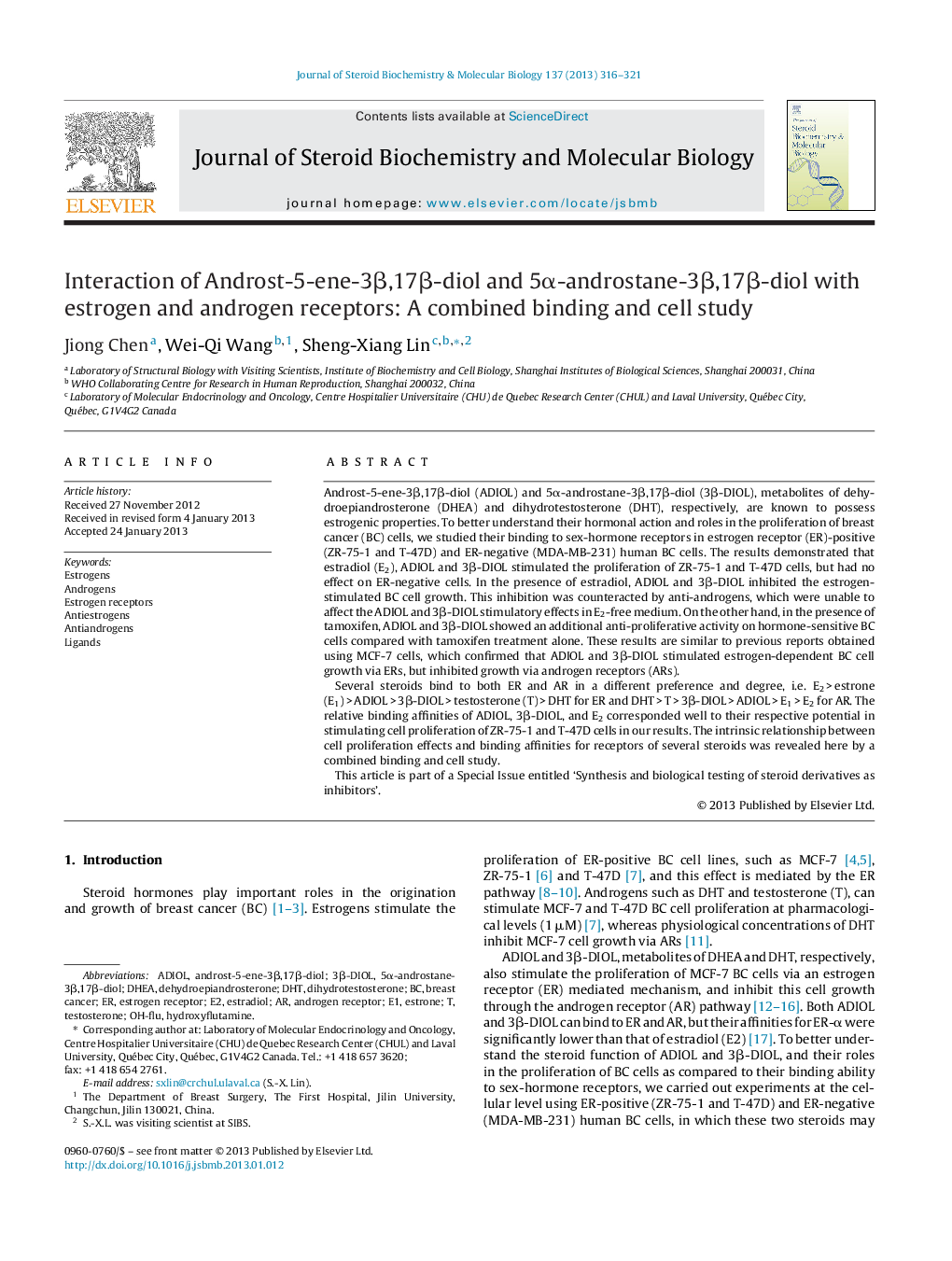| Article ID | Journal | Published Year | Pages | File Type |
|---|---|---|---|---|
| 8339133 | The Journal of Steroid Biochemistry and Molecular Biology | 2013 | 6 Pages |
Abstract
Androst-5-ene-3β,17β-diol (ADIOL) and 5α-androstane-3β,17β-diol (3β-DIOL), metabolites of dehydroepiandrosterone (DHEA) and dihydrotestosterone (DHT), respectively, are known to possess estrogenic properties. To better understand their hormonal action and roles in the proliferation of breast cancer (BC) cells, we studied their binding to sex-hormone receptors in estrogen receptor (ER)-positive (ZR-75-1 and T-47D) and ER-negative (MDA-MB-231) human BC cells. The results demonstrated that estradiol (E2), ADIOL and 3β-DIOL stimulated the proliferation of ZR-75-1 and T-47D cells, but had no effect on ER-negative cells. In the presence of estradiol, ADIOL and 3β-DIOL inhibited the estrogen-stimulated BC cell growth. This inhibition was counteracted by anti-androgens, which were unable to affect the ADIOL and 3β-DIOL stimulatory effects in E2-free medium. On the other hand, in the presence of tamoxifen, ADIOL and 3β-DIOL showed an additional anti-proliferative activity on hormone-sensitive BC cells compared with tamoxifen treatment alone. These results are similar to previous reports obtained using MCF-7 cells, which confirmed that ADIOL and 3β-DIOL stimulated estrogen-dependent BC cell growth via ERs, but inhibited growth via androgen receptors (ARs).Several steroids bind to both ER and AR in a different preference and degree, i.e. E2 > estrone (E1) > ADIOL > 3β-DIOL > testosterone (T) > DHT for ER and DHT > T > 3β-DIOL > ADIOL > E1 > E2 for AR. The relative binding affinities of ADIOL, 3β-DIOL, and E2 corresponded well to their respective potential in stimulating cell proliferation of ZR-75-1 and T-47D cells in our results. The intrinsic relationship between cell proliferation effects and binding affinities for receptors of several steroids was revealed here by a combined binding and cell study.This article is part of a Special Issue entitled 'Synthesis and biological testing of steroid derivatives as inhibitors'.
Keywords
Related Topics
Life Sciences
Biochemistry, Genetics and Molecular Biology
Biochemistry
Authors
Jiong Chen, Wei-Qi Wang, Sheng-Xiang Lin,
